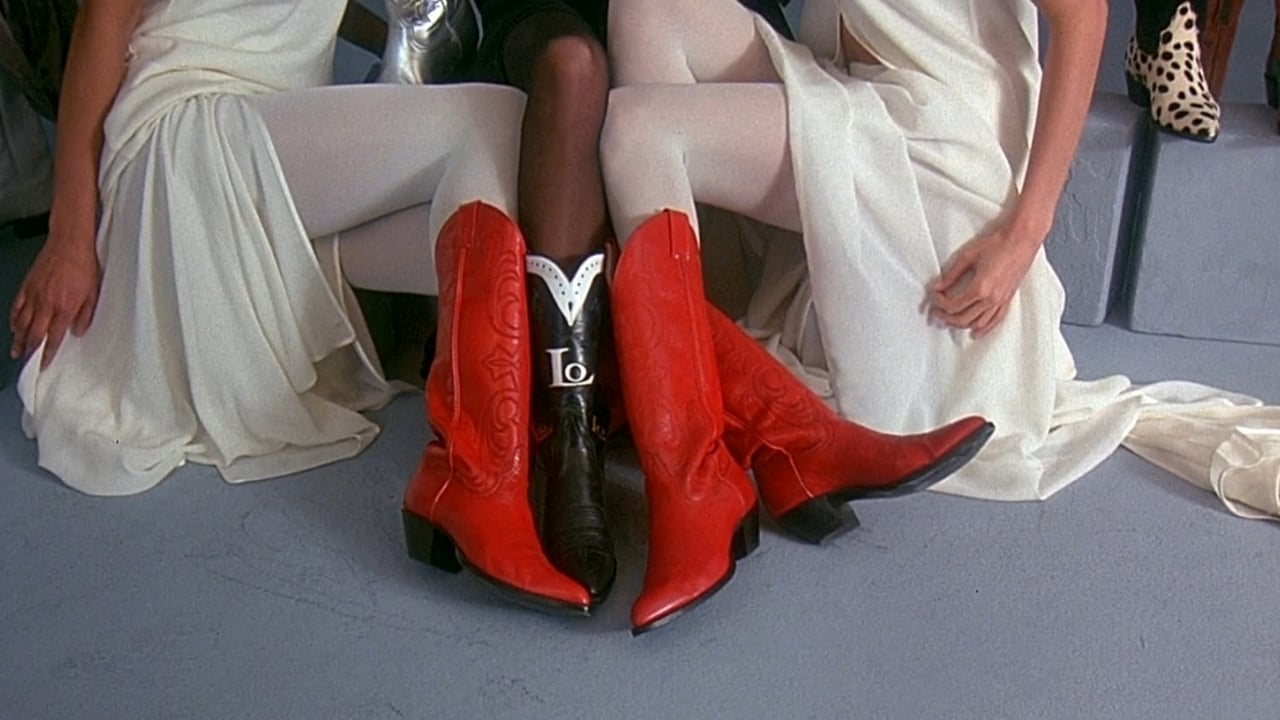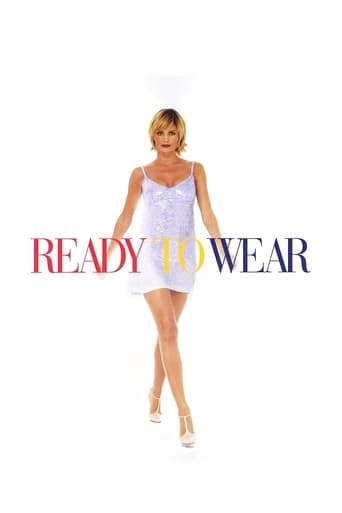

This is an interesting homage to the filmmakers who have gone before Altman and to the careers of many who dress up his celluloid clips. The writing misses, not that it doesn't create interesting sequences or moments, but it seems to go no where. But no one does this type of film better than Altman and even when Altman is bad there is always a lot to look at.The film moves quickly but it always leaves you wanting more. The characters of Kellerman, Ullman and Hunt had they been developed could have been a film within a film and been an interesting comedic farce. Unfortunately that possibility is never realized. Stephen Rea's character is just plain annoying, there's no exaggeration and no depth and it appears he has one expression. Forest Whitaker is always a pleasure to watch because of the depth of his persona. Ruppert Everett does nothing more than come off as a spoiled little boy playing in an adult world. One bright note is Chiara Mastrioanni.But then you move to the pro's. Loren and Mastroianni are delicious to watch. You can't help but watch the Diva Loren walk and talk. Mastroianni's puppy dog routine is endearing because it harks back to the film history they have created together. The homage to Yesterday, Today and Tomorrow is particularly of note, not just because one is amazed at how well Loren still looks but because Altman takes the scene and puts a rather timely note to it. Lauren Bacall seems totally wasted as she wanders in and out of the goings on with no purpose. Jean Rochefort and Anouk Aimee probably get the acting laurels because they both manage to underplay while everyone else is over blown. Julia Roberts and Tim Robbins although set in an interesting situation become tiresome and their characters rather void of any color. Kim Bassinger is perfect as the announcer because she completely conveys her inability to comprehend the fashion world and still be in awe of those who inhabit that world. Danny Aiello's turn is probably the best realized character for laughs in the film while Teri Garr is totally wasted.But that's the point of the movie. The fashion world is over blown and Altman has chronicled that in this film and yet at the same time managed to pay homage to some incredible film careers, films, and legends.
... View MoreI've seen it a couple of times. I understand Altman was maybe trying to create a disjointed, farcial almost surreal type atmosphere, but I found the lack of cohesiveness and clear cut thread annoying and it caused me to not care about the film or its characters. Being just a regular jane and not blessed with 15 or so credits in Film-making at NYU, the subtly of the art was lost on me. I desperately wanted just a little exposition to grab onto, and all the film's inside jokes and vague, obscure references to Italian films I found to be self indulgent. I'm not saying this film was bad - just bad for me. I think he could have pulled off the same feel and frenzied little European farce with a TOUCH more connective tissue in the plot. Not a lot, just a little for the audience to care about the story, the characters and whatnot. The thing I found in the film that I even cared more than a fig about was the Simone storyline.
... View MoreI am completely baffled at the bad reviews this movie received. Robert Altman apparently shot first and came up with a story board later, and we are the richer for it. Just as the finale of this romp is definitive statement on the putative subject of the ready to wear fashion week,so this movie is a statement on movie making, and the conclusions would appear to be the same. Altman's confidence in dispensing with the conventions of plot, character development, the classic forms of boy meets girl, boy loses girl, boy jumps off the Eiffel Tower, girl moves in with Godzilla, is as stunning as the final scene. The sheer pleasure of watching Altman's usual suspects perform at the top of their game is enough reason to watch the movie. I will never look at Forest Whitaker and Rupert Everett in the same way. As for Sophia Loren and Marcello Mastroianni, blame it all on pasta. And as for the clothes and the people and the sad old boobs of publishers, frosting on the cake. What a complete visual joy!
... View MoreBack in 1994, when Robert Altman made "Prêt-à-porter", he was 70 years old. He was one of the few important auteurs of a profession celebrating its first centennial. Again, the wise filmmaker's satirical approach (directed on this opportunity to the fashion world) was misunderstood. This time, the maestro pointed his finger to consumerism on a global scale, by covering a convention of the haute couture circle, in which fashion was the vehicle to expose the dehumanised materialism of contemporary world.Starting with a prologue at Dior's in Moscow (which could be Rome or Paris), Altman described a multinational microcosm defined by its unrestrained marketing of material goods. Altman did not underestimate fashion as a key element in our lives: as a matter of fact, he used fashion as the clue to gain access to the film. As expected, "Prêt-à-porter" was not a paean to designers, models, photographers or fashion magazine editors. After the convention's creator unexpectedly dies, Altman and co-writer Barbara Shulgasser aimed at the surface of the fashion world, searching for its essence, for a trace of humanity, and led us to an unexpected ending, which is a sort of purification, a baring of the bodies and souls. Altman, at 70, knew very well that mankind's main alternative was (and is) the transparent ethics that radiates from pure spirits committed to preserve life on this planet, beyond fabrics and fashions.To tell the story of this garment catharsis, Altman used as his stylistic technique the superficiality that permeates the milieu he's describing (one I know after working in a couple of such events in my youth.) Everything is bright and beautiful, but somehow it seems as if "nothing is happening." The audience is denied all the myths that have led many designers and models to haughtiness, so their attitudes become more vacuous, and their incentive to rapacious consumerism is more obvious. Being unable to speak of art or the "fashion essence" in a contemporary setting where commerce rules, Altman used a fragmented narrative, with overlapped dialogues –often improvised- as in his other reflections on the crisis of communication, a central theme in "Nashville." Altman is one of the few filmmakers who is able to reunite large casts and create characters of high sociological value (mainly in "McCabe & Mrs. Miller", "Nashville", "A Wedding", "Short Cuts" and "Gosford Park", and to a lesser degree in "HealtH" and "The Player"), but he is also averse to psychological realism, that old strategy inherited from the 19th century novel, and that some people still ask for in our post-post-modern world...In this film, Altman relied on famous faces to construct a game of facades with few strokes, choosing among the best of them: those who are able to create a believable character with a few significant details, those who can go from the subtle –as the wine spot on a reporter's sweater- to the pompous, as the dark glasses of the Irish photographer or Sophia Loren's hats. On the other hand, he relied on the audiences' own information, making them interact with the film, adding data or making associations. For example, only those who have seen Vittorio de Sica's "Yesterday, Today and Tomorrow" and "Sunflower," can enjoy to the full the cinematic homage to Sophia and Marcello Mastroianni. Their story echoes "Sunflower", while there is a reprise of Sophia's strip-tease in "Yesterday " with a different (and sad) effect on Marcello; or if you have been in an event like the one in the film, you may remember people as the characters played by Tim Robbins and Julia Roberts, two reporters who spend the whole event making love in their hotel rooms."Prêt-à-porter" is a good film, which contains some of the typical Altmanian digressions that some do not enjoy. But, as Andrei Tarkovsky once said: "When you are in front of a really major figure, you have to accept him with all his weaknesses, which become distinctive qualities of his aesthetics."
... View More